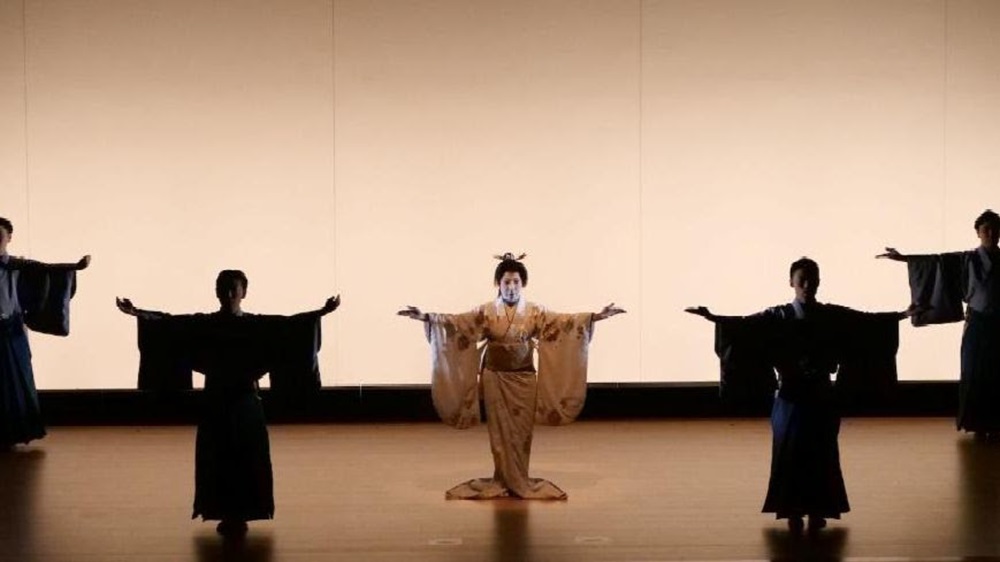
Nihon Buyo in the 21st Century: From Kabuki Dance to Boléro
Japan Society proudly presents Nihon Buyo in the 21st Century: From Kabuki Dance to Boléro, taking place Wednesday, January 24 through Friday, January 26 at 7:30pm at Japan Society. Seats to these live performances are available now for a price of $55 for general admission tickets or $44 for Japan Society members.
Witness a breathtaking union of Japan’s most talented nihon buyo dancers, featuring the esteemed Hanayagi Motoi and rising young star Azuma Tokuyo (also known as Nakamura Kazutaro in kabuki theater). Nihon buyo, literally meaning “Japanese dance,” encompasses an animated style that draws from traditional kabuki dance techniques. The program begins with Toba-e, a kabuki dance accompanied by live music, which depicts a comical manga story from the Edo period. The second half of the program features a piece set to Maurice Ravel’s famous score, Boléro. Expertly choreographed by Hanayagi Genkuro, this unexpected combination of East and West brilliantly retells a classic Japanese folk tale, with Kazutaro showcasing his exceptional talent in the onnagata (female) role of the heartbroken princess, Kiyohime. The program also features three standalone musical pieces performed live by four traditional Japanese musicians on shamisen, percussion and vocals: Matsuri (Festival), (instrumental); Yugiri, the Courtesan (instruments and singing); and Hana (Flowers) (instrumental). All presentations are performed in Japanese with English supertitles.
Nihon buyo is a traditional performing art from Japan with a 150-year history, based on kabuki dance technique with an even longer history of 400 years. However, dancers not only inherit classical techniques and repertoire, but also innovate to make nihon buyo a performing art that lives in the present through contemporary influence. This program, featuring some of Japan’s greatest living nihon buyo dancers, displays the charm of Japanese dance through music familiar to European and American audiences alongside “classical works” featuring the unique stylistic beauty and traditional movements of nihon buyo. Accordingly, Nihon Buyo in the 21st Century showcases the current appeal and bright future of Japanese dance as a performing art that “lives in the moment,” resonating with audiences around the world.
Nihon buyo can be translated as “Japanese (nihon) dance (buyo).” Nihon buyo and kabuki dance share the same technique and training methods, which require their students to begin study from early childhood in order to master the necessary highly stylized body movements. Using traditional kabuki dance techniques, nihon buyo performers have developed a specialized repertoire that consists of adaptations of popular sections from kabuki plays, pieces inspired by classical noh plays and various folktales, as well as unique works written and choreographed from scratch.
Visit japansociety.org/performing-arts for more information or contact the box office at 212-715-1258. Box office hours at Monday through Friday, 11:00am to 6:00pm. Japan Society is located at 333 East 47 Street, between First and Second Avenue, accessible via the 4/5/6 train at Grand Central Station or the E train at Lexington and 53 Street.
